Allisonkitten - Here, Have Some Space
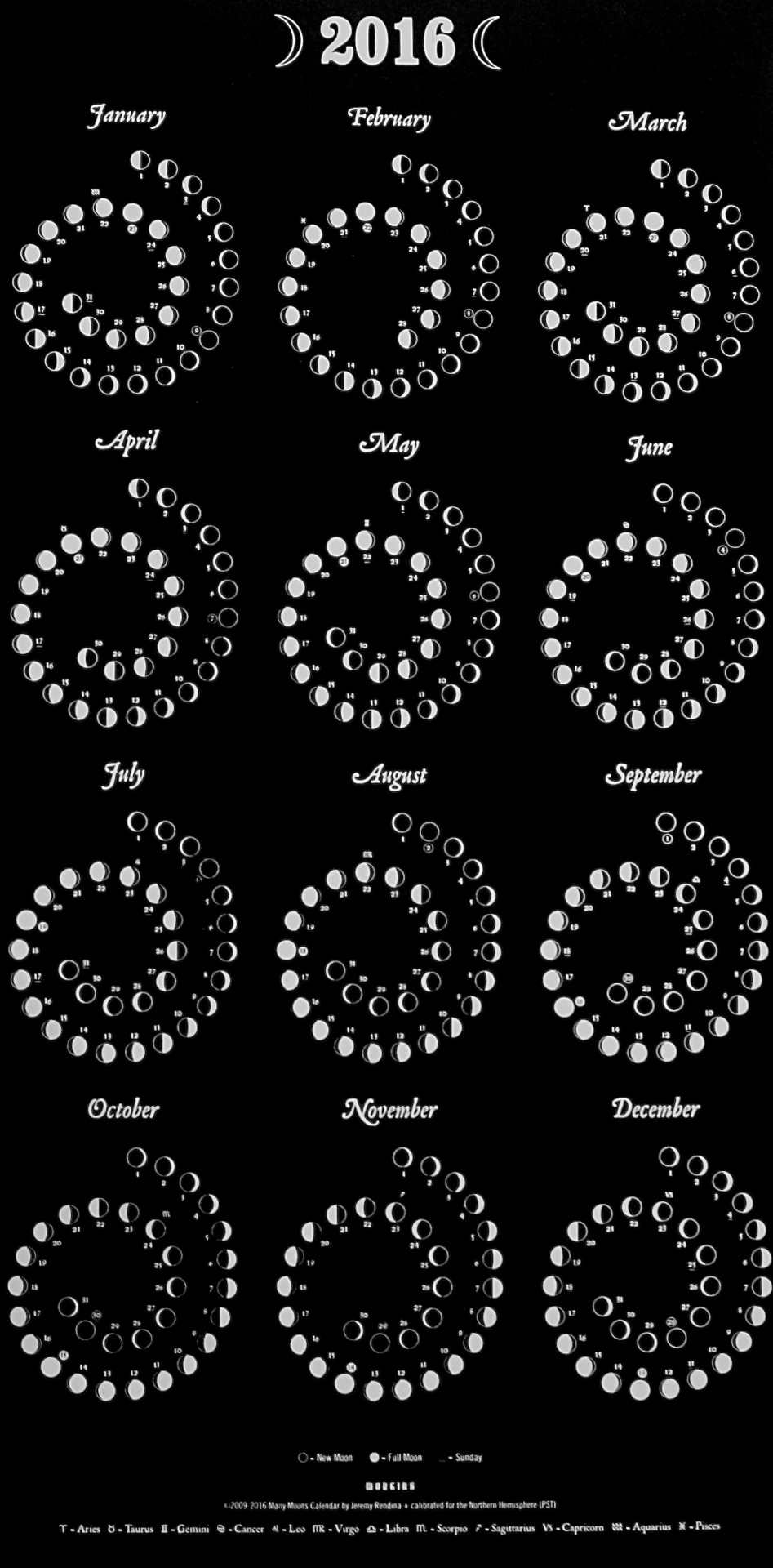
More Posts from Allisonkitten and Others

Wonderfully smooth wagon-wheel effect from Saturn’s polar hexagon. Photographed by Cassini, 22 March 2014.
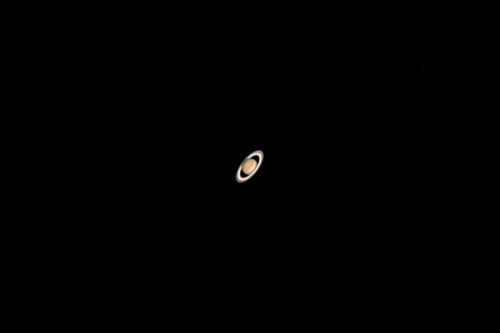
Saturn Photographed by Giacomo Venturin
js
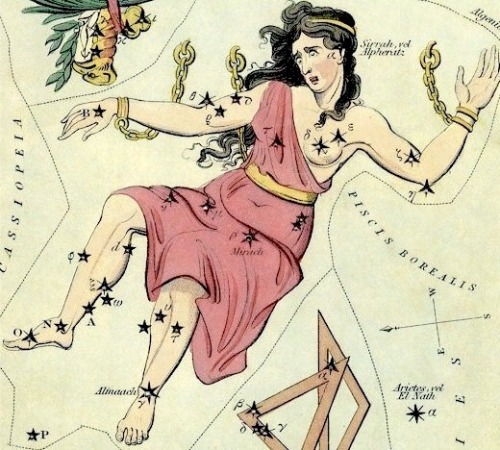
Andromeda Legend: The Chained Lady
Cassiopeia, Andromeda’s mother, boasted that she was the most beautiful woman in the world, even more beautiful than the gods. Poseidon, the brother of Zeus and the god of the seas, took great offense at this statement, for he had created the most beautiful beings ever in the form of his sea nymphs. In his anger, he created a great sea monster, Cetus (pictured as a whale) to ravage the seas and sea coast. Since Cassiopeia would not recant her claim of beauty, it was decreed that she must sacrifice her only daughter, the beautiful Andromeda, to this sea monster. So Andromeda was chained to a large rock projecting out into the sea and was left there to await the arrival of the great sea monster Cetus. As Cetus approached Andromeda, Perseus arrived (some say on the winged sandals given to him by Hermes). He had just killed the gorgon Medusa and was carrying her severed head in a special bag. When Perseus saw the beautiful maiden in distress, like a true champion he went to her aid. Facing the terrible sea monster, he drew the head of Medusa from the bag and held it so that the sea monster would see it. Immediately, the sea monster turned to stone. Perseus then freed the beautiful Andromeda and, claiming her as his bride, took her home with him as his queen to rule.
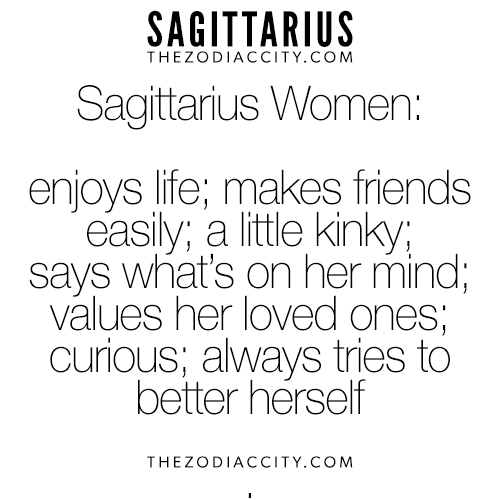
“Don’t think of night as the absence of day; think of it as a kind of freedom. Turned away from our sun, we see the dawning of far flung galaxies. We are no longer sun blinded to the star coated universe we inhabit.
Diane Ackerman, A Natural History of the Senses (via beautyandtheuniverse)
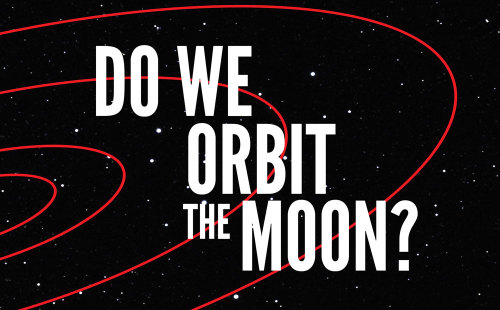



In last week’s episode of It’s Okay To Be Smart, I talked about why the moon orbits the Earth. If you haven’t watched it yet, give it a look. I’ll wait.
There’s some pretty interesting and counterintuitive astrophysics keeping the moon orbiting Earth and not getting gobbled up by the sun. But I left one thing out of that video. The moon doesn’t really orbit the Earth. Strictly speaking, the moon and the Earth orbit each other.
Just like the Earth exerts a gravitational force on the moon, the moon and its mass are “tugging” right back on us. As a result, the two bodies are actually orbiting a point in between, called the barycenter.
If you’ve ever watched pairs figure skating, you’ve seen this in action. When spinning through this move, called a “death spiral”, the two skaters are actually rotating around a barycenter in between their two centers of mass:
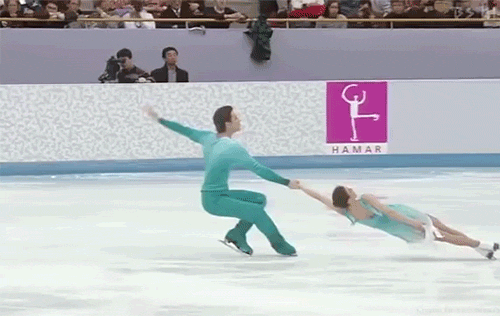
This is true of any two orbiting objects, whether it’s a pair of binary stars, a planet and its star, or a planet and its moon(s). You can think of it just like a playground see-saw, with the masses and distance between the two orbiting objects determining where the “balance” point is.
The Earth/Moon barycenter is about 1,700 km beneath the crust:
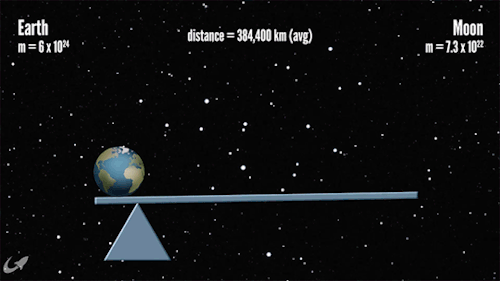
Jupiter, despite being more than five times farther from our central star than Earth is, is so massive that its barycenter lies outside of the Sun:

The Earth-Sun barycenter, on the other hand, is effectively in the center of the sun. Our mass is just peanuts compared to that of that huge burning ball of hot gas:
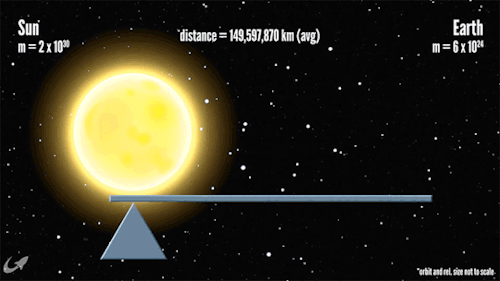
When two orbiting bodies have similar masses and are relatively close to each other, it can be tough to figure out who’s orbiting whom. This is one reason that some astronomers think Pluto and its moon Charon are more of a double-dwarf-planet system:
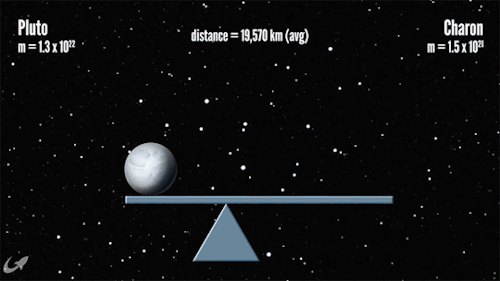
Scientists use the see-saw physics of barycenters to study planets in distant solar systems, observing these wobbly waltzes to discover planets that we can’t see with telescopes.
The dig deeper into this cool bit of astrophysics, check out this article from my friend Chris Crockett. And cue the Dead or Alive…
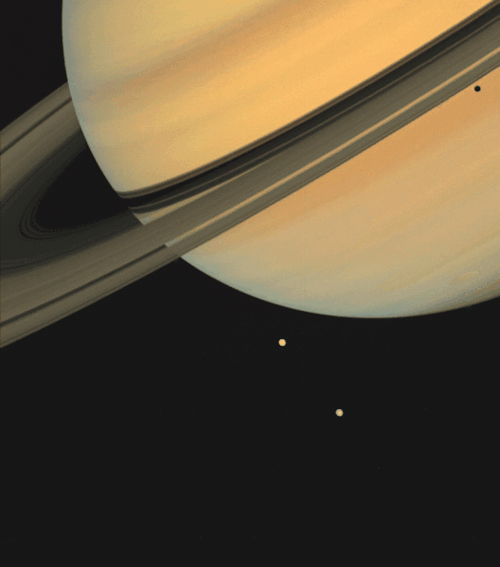
Planet Saturn and its moons Tethys and Dione were, photographed by the Voyager 1 space probe in November of 1980.









What’s Up for October?

This month is filled with exciting celestial sights. Here are 10 targets you can view this month:
10. Unusual Sunset

During a sunset, our thick atmosphere absorbs most colors of sunlight, but red light is absorbed the least. Rarely, green flashes can be seen just above the sun’s edge. As the last sliver of the disk disappears below the horizon, be sure to watch its color.
9. Belt of Venus

Just after sunset, turn around and face east. A dark shadow will move up from the horizon and gradually cover the pinkish sky. This is caused from the Earth itself blocking the sunlight and is called the Earth Shadow or the Belt of Venus.
8. Crepuscular Rays

Also just after sunset, or before dawn, you may see rays of sunlight spread like a fan. These are called crepuscular rays and are formed when sunlight streams through gaps in the clouds or mountains.
7. Aurora Borealis

The northern lights, also known as the aurora borealis, are caused by collisions between gaseous particles in Earth’s atmosphere and charged particles released from the sun. The color of the lights can changed depending on the type of gas being struck by particles of solar wind. You can find out when and where to expect aurorae at the Space Weather Prediction Center.
6. Andromeda Galaxy

Did you now that The Andromeda Galaxy is one of the few you can actually see with your naked eye? In October, look nearly overhead after sunset to see it! This galaxy is more than twice the apparent width of the moon.
5. Moon Features

Nights in mid-October are excellent for viewing the features on the moon. Areas like the Sea of Tranquility and the site of the 1969 Apollo 11 landing will be visible.
4. A Comet

This month, the European Space Agency’s Rosetta mission target, a comet with a complicated name (Comet 67P Churyumov-Gerasimenko), is still bright enough for experienced astronomers to pick out in a dark sky. On October 9, you may be able to spot it in the east near the crescent moon and Venus.
3. Meteor Showers

There are multiple meteor showers this month. On the 9th: watch the faint, slow-moving Draconids. On the 10th: catch the slow, super-bright Taurids. And on the 21st: don’t’ miss the swift and bright Orionids from the dust of Comet Halley.
2. Three Close Planets

On October 28, you’ll find a tight grouping of Jupiter, Venus and Mars in the eastern sky before sunrise.
1. Zodiacal Light

The Zodiacal light is a faint triangular glow that can be seen from a dark sky after sunset or before sunrise. What you’re seeing is sunlight reflecting off dust grains that circle the sun in the inner solar system. These dust grains travel in the same plane as the moon and planets as they journey across our sky.
For more stargazing tools visit: Star Tool Box
Make sure to follow us on Tumblr for your regular dose of space: http://nasa.tumblr.com
-
 iremgranger-blog liked this · 8 years ago
iremgranger-blog liked this · 8 years ago -
 sushiwithag liked this · 8 years ago
sushiwithag liked this · 8 years ago -
 ssupreme97 liked this · 8 years ago
ssupreme97 liked this · 8 years ago -
 defectiveporcelaindoll liked this · 8 years ago
defectiveporcelaindoll liked this · 8 years ago -
 chsampson reblogged this · 8 years ago
chsampson reblogged this · 8 years ago -
 thatgirljordie reblogged this · 8 years ago
thatgirljordie reblogged this · 8 years ago -
 adamsimons liked this · 8 years ago
adamsimons liked this · 8 years ago -
 orangeparsleyprincess liked this · 8 years ago
orangeparsleyprincess liked this · 8 years ago -
 jadorelesbananes liked this · 8 years ago
jadorelesbananes liked this · 8 years ago -
 wefail-welose-2win reblogged this · 8 years ago
wefail-welose-2win reblogged this · 8 years ago -
 biktur liked this · 8 years ago
biktur liked this · 8 years ago -
 the-lumikki reblogged this · 8 years ago
the-lumikki reblogged this · 8 years ago -
 magicacaeli-blog reblogged this · 8 years ago
magicacaeli-blog reblogged this · 8 years ago -
 shiroyukiaoi reblogged this · 8 years ago
shiroyukiaoi reblogged this · 8 years ago -
 justpeachypari reblogged this · 8 years ago
justpeachypari reblogged this · 8 years ago -
 mmbris reblogged this · 8 years ago
mmbris reblogged this · 8 years ago -
 mmbris liked this · 8 years ago
mmbris liked this · 8 years ago -
 bravelylovehatoful liked this · 8 years ago
bravelylovehatoful liked this · 8 years ago -
 astrologarithm reblogged this · 8 years ago
astrologarithm reblogged this · 8 years ago -
 specksofthemultiverse liked this · 8 years ago
specksofthemultiverse liked this · 8 years ago -
 awesomeprussia101 reblogged this · 8 years ago
awesomeprussia101 reblogged this · 8 years ago -
 officialmermaidpolice liked this · 8 years ago
officialmermaidpolice liked this · 8 years ago -
 herestopeace reblogged this · 8 years ago
herestopeace reblogged this · 8 years ago -
 chicanxt reblogged this · 8 years ago
chicanxt reblogged this · 8 years ago -
 chicanxt liked this · 8 years ago
chicanxt liked this · 8 years ago -
 addamatic reblogged this · 8 years ago
addamatic reblogged this · 8 years ago -
 exxomoons liked this · 8 years ago
exxomoons liked this · 8 years ago -
 toomanyaliensinvolvedd liked this · 8 years ago
toomanyaliensinvolvedd liked this · 8 years ago -
 cafeconlechegirl liked this · 8 years ago
cafeconlechegirl liked this · 8 years ago -
 layersinstone liked this · 8 years ago
layersinstone liked this · 8 years ago -
 haushinkaisarealgirl reblogged this · 8 years ago
haushinkaisarealgirl reblogged this · 8 years ago -
 haushinkaisarealgirl liked this · 8 years ago
haushinkaisarealgirl liked this · 8 years ago -
 laluna-bruja reblogged this · 8 years ago
laluna-bruja reblogged this · 8 years ago -
 laluna-bruja liked this · 8 years ago
laluna-bruja liked this · 8 years ago -
 rentacopbc liked this · 8 years ago
rentacopbc liked this · 8 years ago -
 coldmoongoddess liked this · 9 years ago
coldmoongoddess liked this · 9 years ago
Just a socially awkward college student with an interest in the celestial bodies in our universe.
279 posts